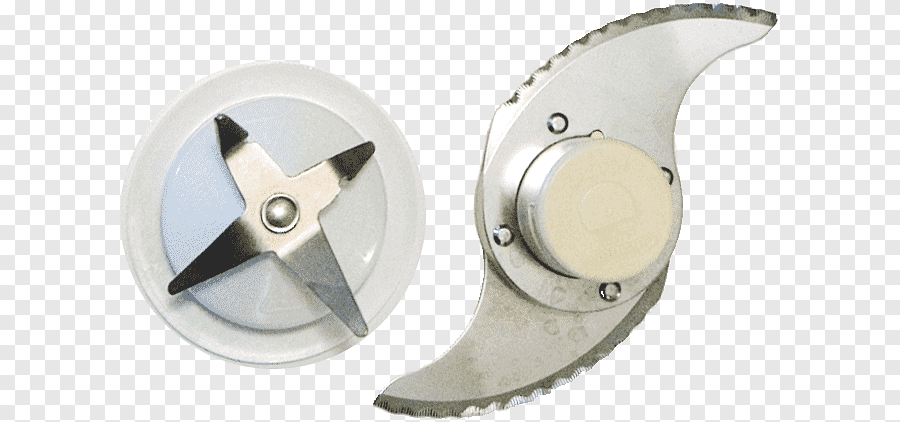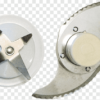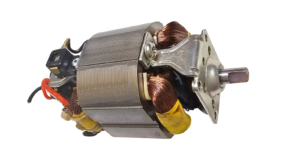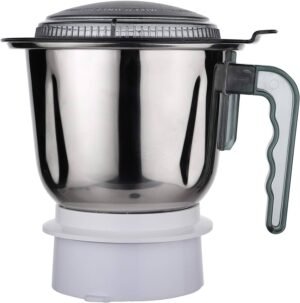Understanding Blender Chopper Blades
Blender chopper blades are crucial components that significantly influence the performance and versatility of a blender. Their primary purpose is to chop, mix, and puree various ingredients efficiently, allowing for the smooth preparation of food. The mechanics of these blades involve spinning at high speeds, which creates a vortex that draws ingredients towards the center for thorough processing. Understanding the different types of blades and their purposes is essential for optimal usage and results.
Blender chopper blades generally fall into two categories: sharp blades and blunt blades. Sharp blades are designed for cutting through tough ingredients, making them ideal for chopping vegetables or pureeing fruits. On the other hand, blunt blades are often used in conjunction with sharp blades to create a thorough blend by mashing and mixing softer ingredients. This combination allows users to achieve a range of textures and consistencies in their desired recipes, ensuring a well-balanced dish.
Material choice is also a significant factor when selecting blender chopper blades. Stainless steel blades are renowned for their durability and resistance to rust and corrosion, making them a popular choice in high-performance blenders. These blades maintain their sharpness over time, resulting in enhanced efficiency when blending. Conversely, plastic blades, while generally lighter and often found in lower-end models, lack the durability of stainless steel. They may become dull more quickly and can struggle with tougher ingredients, limiting their effectiveness.
Ultimately, the right blender chopper blades can elevate your blending experience, ensuring that you achieve the desired textures and finishes in your culinary creations. With an understanding of the various types and materials used in blade construction, you can make informed choices that align with your cooking needs and preferences.
Types of Blender Chopper Blades
Blender chopper blades are essential components that significantly affect a blender’s performance and versatility. Understanding the diverse types of blades available can aid users in selecting the appropriate tool for their culinary tasks. The three primary types of chopper blades include standard blades, serrated blades, and ice crushing blades, each designed for specific functionalities.
Standard blades are the most common type found in blenders. These typically have a sharp, flat design that allows for smooth blending and chopping of various ingredients, from fruits and vegetables to sauces and soups. The advantages of standard blades include their efficiency in creating purées and smoothies, making them ideal for everyday use. However, they may struggle with tougher items, such as fibrous vegetables or large chunks of frozen fruits.
Serrated blades, contrastingly, feature a jagged edge that is particularly beneficial for cutting through tougher, denser ingredients. This type of blade excels at chopping bread, soft fruits, or vegetables with a thick skin, providing a clean cut without mashing. They are favored for their ability to maintain the texture of softer ingredients while ensuring uniformity in size. A downside to serrated blades is that they may not offer the same level of pureeing capabilities as standard blades, limiting their utility in some blending tasks.
Lastly, ice crushing blades are specialized designs aimed at grinding ice and frozen items. With a robust structure and larger cutting surfaces, these blades can handle heavy-duty tasks, making them perfect for frozen cocktails or sorbets. While effective for ice, they are less suitable for standard blending purposes, as they lack the finesse needed for softer ingredients. Users should carefully consider their blending needs to select the most appropriate blade type for their specific applications.
Choosing the Right Blender Blade for Your Needs
Selecting the appropriate blender blade is crucial to achieving optimal results in your culinary endeavors. Understanding the types of ingredients you frequently work with is a foundational step. For instance, if your primary use involves soft fruits or herbs, a blade designed for delicate chopping will be essential. Conversely, when handling harder ingredients such as carrots or nuts, a more robust blade is necessary to ensure effective processing.
The desired texture of the final product is another important consideration. If you prefer finely chopped ingredients, look for blades with sharp, precise edges that can deliver a smooth consistency. On the other hand, for coarser textures, such as those often found in salsas or chunky sauces, a blade that allows for larger, uneven cuts may be more suitable. Understanding how the blade interacts with your ingredients can significantly enhance the quality of your results.
Compatibility with your specific blender model is also key when choosing chopper blades. Not all blades are universally designed; some may only fit particular brands or models. This compatibility not only affects the performance of the blade but also influences safety during operation. Always check the manufacturer’s guidelines to ensure that the blade you select is designed to work with your device. Many brands offer specific blades targeting various culinary functions, which can help streamline your cooking process.
In addition, consider your personal culinary style and frequency of use. If you are an avid cook who frequently prepares a diverse range of dishes, investing in multiple blades can be beneficial. By thoughtfully selecting the right blender blade based on ingredient type, desired texture, and compatibility, you will optimize your blending experience and enjoy a broader range of culinary possibilities.
Maintenance and Care for Blender Chopper Blades
Proper maintenance and care of blender chopper blades are crucial for ensuring their longevity and efficiency. One of the fundamental aspects of maintenance is regular cleaning. After each use, it is advisable to rinse the blades immediately to remove food particles that may accumulate. For deeper cleaning, a mixture of warm water and mild dish soap can be used. Submerge the blades carefully to avoid injury and scrub gently with a soft brush. It is important to ensure that the blades are completely dry before storing them to prevent moisture accumulation, which can lead to rusting.
Sharpening the blades is another essential maintenance task. While many high-quality blender blades are designed to remain sharp for extended periods, they may still require sharpening after extensive use. This can often be accomplished using a manual or electric sharpener. Ensure that any sharpening tools are appropriate for the type of blade material; stainless steel, for example, may require specific types of sharpeners. Regularly checking for sharpness can help you maintain effective chopping and blending performance.
Safe storage practices play a crucial role in the upkeep of blender chopper blades. When not in use, blades should be stored in a designated area, such as a blade guard or a designated drawer, to prevent accidental injury or dulling from contact with other kitchen utensils. It is also wise to keep the blades in a dry environment to mitigate the risk of rusting.
Common issues such as dullness or rusting can occur if blades are not adequately maintained. If you notice that your blender chopper blades are becoming less effective, it may be time to sharpen or replace them. Addressing these problems promptly can ensure better performance and extended blade life. By implementing these maintenance practices, you can effectively prolong the lifespan and efficiency of your blender chopper blades.
Conclusion
In summarizing the essential points discussed in this guide, it is evident that understanding the various types of blender chopper blades and their respective uses plays a significant role in achieving optimal blending performance. Different blade designs cater to specific tasks, allowing users to finely chop, puree, or even mix ingredients with great efficacy. Regular maintenance of these chopper blades is paramount; keeping them clean and sharp not only ensures longevity but also enhances the overall quality of your culinary creations. Neglecting this critical aspect may result in unintended consequences, such as unevenly blended mixtures or reduced efficiency in food preparation. Observing proper maintenance routines, including descaling and thorough cleaning, can dramatically improve the performance of your blender.Moreover, exploring the various functionalities of your blender can lead to creative recipe implementations. Experimenting with different ingredients, textures, and blending techniques will unlock the potential that your blender’s chopper blades offer. Whether one desires to achieve smooth smoothies, chunky salsas, or creamy soups, embracing experimentation can enrich your culinary experience and elevate your dishes.It is also advisable to familiarize oneself with the specific recommendations for each type of blade, as this knowledge aids in making informed choices during food preparation. Upgrading to higher-quality blades or supplementary attachments may yield even better results, depending on the desired outcome.In conclusion, by maximizing your understanding and taking proper care of your blender’s chopper blades, you can significantly enhance your kitchen efficiency. A well-maintained blender not only streamlines the cooking process but also invites creativity, making the art of cooking a more enjoyable and rewarding endeavor.
| Blender Chopper Brand Name | Bajaj, Bosch, Havells, Inalsa, Kenwood, Morphy Richards, Panasonic, Philips, Prestige, Wonderchef |
|---|---|
| Technician Type | With Technician, Without Technician |
Only logged in customers who have purchased this product may leave a review.
Related products
-
Blender Chopper Parts
Blender Chopper Blade Holder/Assembly
Rated 0 out of 5₹544.00Original price was: ₹544.00.₹454.00Current price is: ₹454.00. Select options This product has multiple variants. The options may be chosen on the product page -
Blender Chopper Parts
Blender Chopper Motor
₹1,728.00 – ₹4,499.00 Select options This product has multiple variants. The options may be chosen on the product pageRated 0 out of 5 -
Blender Chopper Parts
Blender Chopper Jars and Bowls
Rated 0 out of 5₹1,465.00Original price was: ₹1,465.00.₹1,221.00Current price is: ₹1,221.00. Select options This product has multiple variants. The options may be chosen on the product page -
Blender Chopper Parts
Blender Choppers Gaskets/O-Rings
Rated 0 out of 5₹234.00Original price was: ₹234.00.₹195.00Current price is: ₹195.00. Select options This product has multiple variants. The options may be chosen on the product page







Reviews
There are no reviews yet.